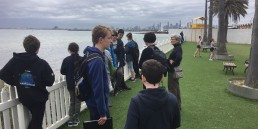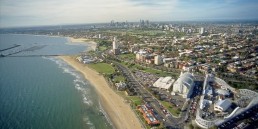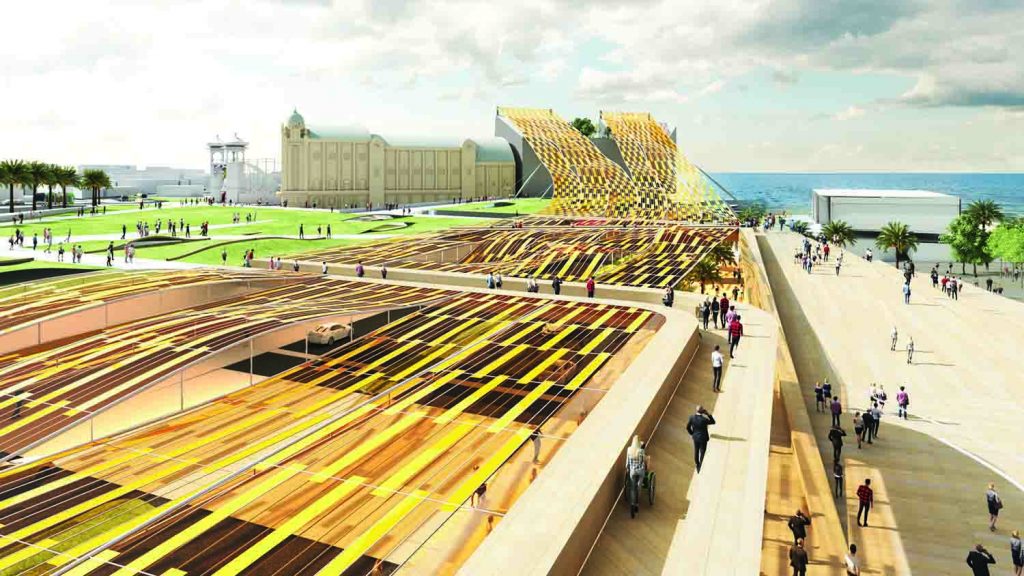
Artist Team: Martin Heide, Dean Boothroyd, Emily Von Moger, David Allouf, Takasumi Inoue, Liam Oxlade, Michael Strack, Richard Le; Mike Rainbow, Jan Talacko; John Bahoric; Bryan Chung, Chea Yuen Yeow Chong, Anna Lee, Amelie Noren
Energy Technologies: flexible mono-crystalline silicon photovoltaic, wind energy harvesting, microbial fuel cells
Annual Capacity: 2,220 MWh
A submission to the 2018 Land Art Generator design competition for Melbourne
The results of the people’s vote for the 2018 Land Art Generator Initiative design competition for Melbourne are in. From October 19 to 28, the St Kilda community in the City of Port Phillip had the opportunity to vote for their favorite shortlisted LAGI 2018 design at a pop-up gallery exhibition held at the Acland Street Plaza. Of the 25 shortlisted designs, three received a particularly enthusiastic thumbs up from the locals.
The official LAGI 2018 jury—who together awarded the cash prize for first and second place—was comprised of 14 high-profile professionals, both local and international. It would be entirely possible that the jury and the local community would have completely different ideas about what energy generating work of art would most resonate for the design site. Not so this year. It turns out that NH Architecture’s Light Up, a golden canopy comprised of 8,600 ultra-efficient flexible photovoltaic panels capable of powering up to 900 low-energy homes, not only won the LAGI 2018 design competition—they also won the people’s vote!
Martin Heide, lead architect on the project, says they are delighted to have been announced as the People’s Choice award winner.
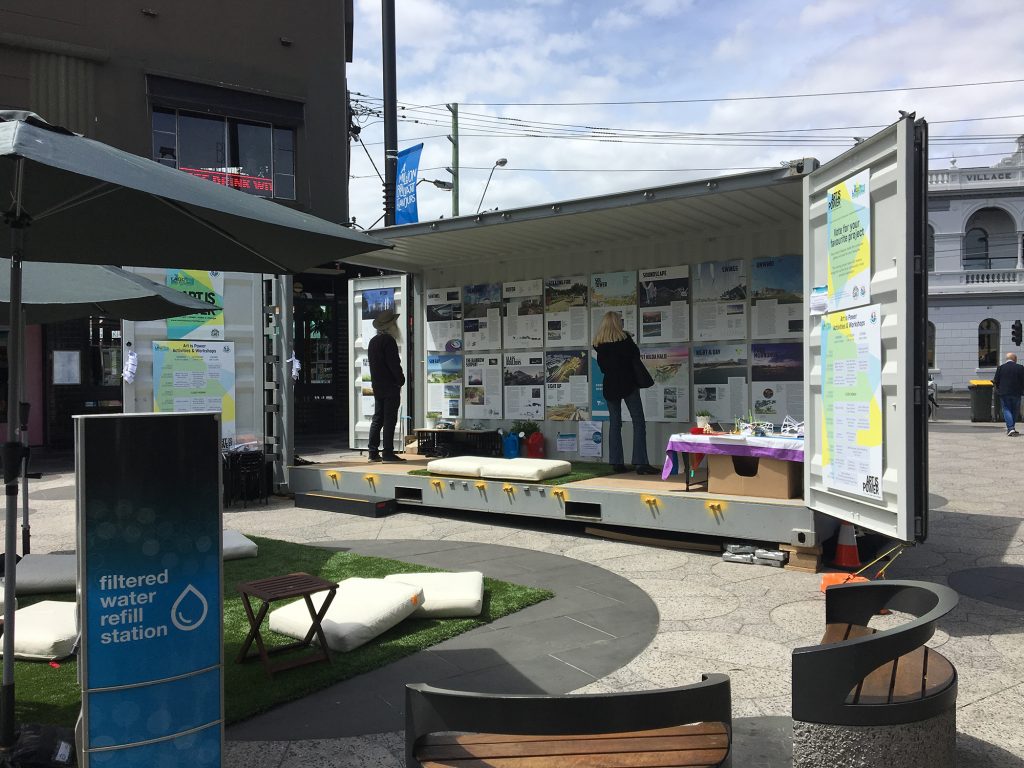
“Whilst it is incredibly validating to have won the Jury’s award, the People’s Choice represents a strong community-lead support for our design for the site that has been famously contested for the past decade. Our team was able to spend a day at the Acland Street Pop-up “Art Is Power” exhibition, and the level of engagement and feedback on the initiative and our proposal was overwhelmingly positive. It clearly shows that the community is behind the redevelopment of the Triangle site, and would like to see the precinct finally transformed into a place showcasing sustainable design.”
LAGI co-directors Elizabeth Monoian and Robert Ferry echo Heide’s response.
“Light Up has a timeless, yet playful quality to it that speaks to a wide spectrum of aesthetic tastes and sensibilities.”
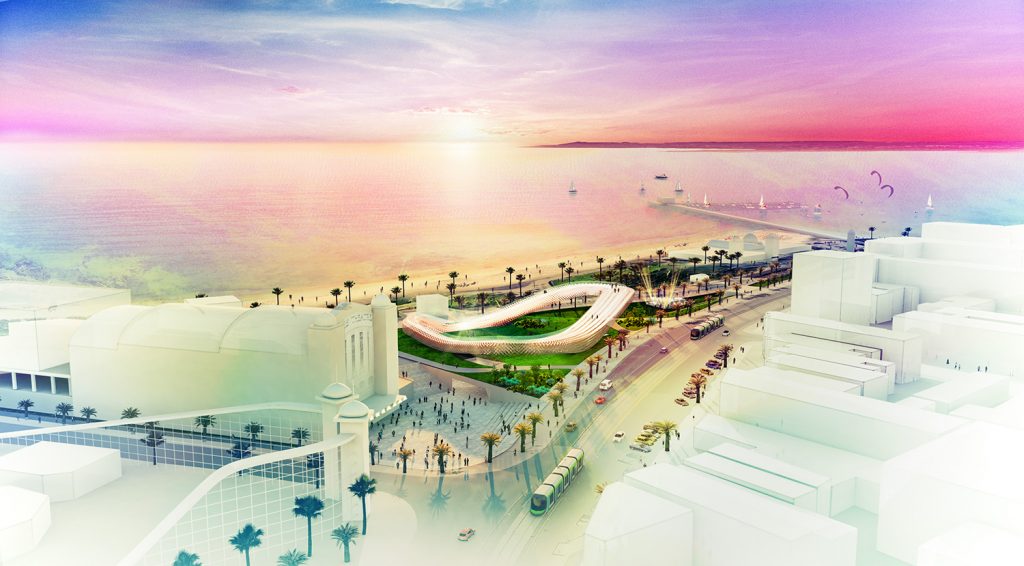
Artist Team: Pete Spence, Hiroe Fujimoto, Sacha Hickinbotham, Michael Richards, Alison Potter, Jason Embley
Energy Technology: silicon photovoltaic thin-film (Sphelar®)
Annual Capacity: 2,000 MWh
A submission to the 2018 Land Art Generator competition for Melbourne
St Kilda Halo by Grimshaw Architects, yet another local architecture firm, took second place in the people’s vote. Also solar-powered, the design takes inspiration from the way a forest captures dappled sunlight through the canopy. It is comprised of layer upon layer of Sphelar—tiny spherical balls 1.2 to 1.8 mm in diameter that have electrodes on opposite sides, allowing them to absorb solar energy from every direction.
Architect Pete Spence, who took the lead on this project, says his team kept the community at the top of their minds throughout the design process. “We’re really aware that there has been this long process with the community to establish the existing masterplan,” he says. “So we sought to retain all of the best parts of the existing masterplan and just build on it a little bit with our scheme.”
Since they are local, his team was also able to meet with dozens of community members throughout the pop up exhibition. “There was a huge amount of engagement,” he says, adding that “a lot of people were really keen for this type of project to actually eventuate.”
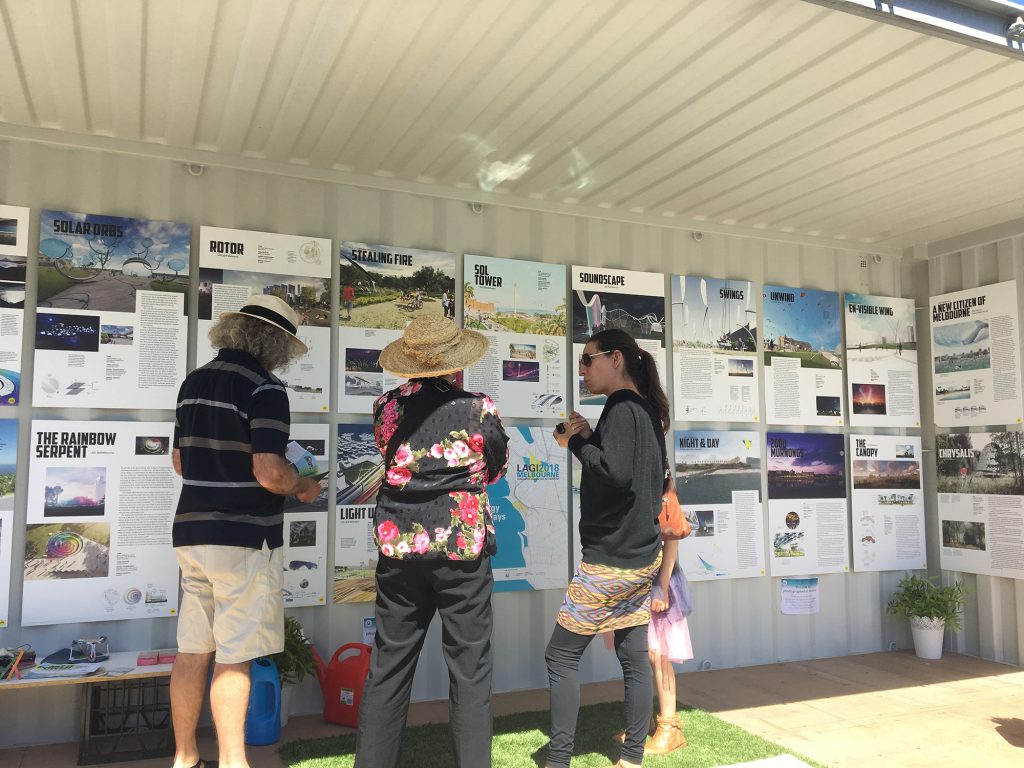
While NH Architecture and partners incorporated standard photovoltaic technology in their design to increase its chances of construction, Grimshaw used a fairly obscure Japanese technology that has not received a lot of air time and is therefore perhaps trickier for the lay person to visualize.
To help visitors understand their vision, the Grimshaw team brought VR headsets down to the plaza. By seeing the virtual design in its intended space, visitors were able to experience how such a dynamic work of art might transform St Kilda Triangle.
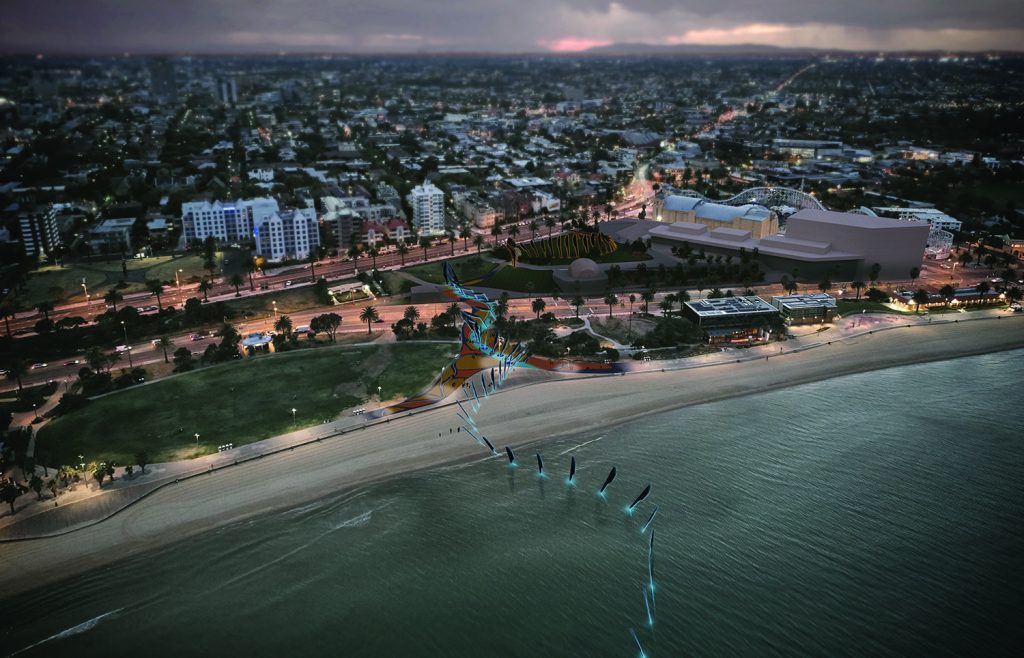
Artist Team: Soren Luckins, Ashleigh Adams, George Thompson, Kate Luckins, Alan Pears, Erin Pears, Peter Bennetts, Jasmine Sarin, Elder Arweet Carolyn Briggs, Rae Fairbairn, Dave Stelma
Energy Technologies: amorphous silicon thin-film photovoltaic
Annual Capacity: 400 MWh
A submission to the Land Art Generator Initiative 2018 Competition for Melbourne
The people’s third choice was Ngargee, a design that is deeply informed by the indigenous history of St Kilda. The designers, Büro North, consulted with the site’s original custodians to ensure their design would reflect the aspirations and visions of all St Kilda residents. Comprised of 87 solar powered feathers aligned to create the appearance of an enclosure, the design is capable of producing 400 MWh annually.
Elizabeth and Robert feel that it is fitting and no surprise that Ngargee would be among the top choices of the public voting process.
“The project has a light footprint upon the landscape, can work seamlessly into any future master plan for St Kilda Triangle development, uses very proven solar technology, stitches the triangle to the waterfront, and most critically, it speaks to the importance of remembering the wisdom of those who have lived in harmony with nature on the land for thousands of years.”

While the City of Port Phillip can’t guarantee that any of the LAGI 2018 designs will be built, everyone involved has been deeply encouraged by the community’s resounding zeal throughout the competition process.
Tafline Laylin is a freelance communicator and journalist who strives for global environmental and social justice. Her work has appeared in The Guardian, The Atlantic, OZY.com, and a variety of other international publications.

